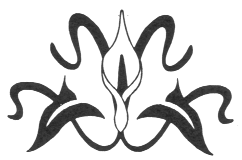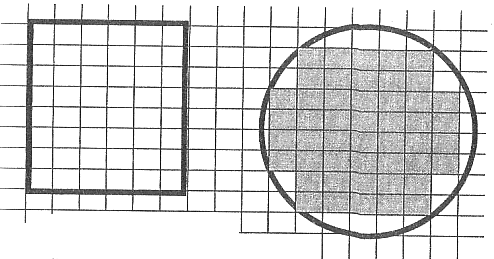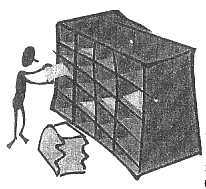 TRIZ
Textbooks: CID Course for Children, 2-1W01 TRIZ
Textbooks: CID Course for Children, 2-1W01 |
  
|
| Introduction.
Acquaintance with Fantasy City.
Topic 1.
Card Index - First Step Towards Creativity |
Fantasy
City:
Course of Creative Imagination
Development (CID), 2nd Grade, 1st Semester, Children Workbook |
Natalia
V. Rubina, 1998 [published
in Russian]
English
translation by Irina Dolina,
April 2, 2001
Technical
Editing by Toru Nakagawa, July
15, 2001 |
Published
in this "TRIZ Home Page in Japan" in English on Jul. 15, 2001 under the
permission of the Author.
(C) N.V.Rubina,
I. Dolina, T. Nakagawa, 2001 |
 |
Introduction.
Acquaintance
with Fantasy City |
Guidebook
Hello!
We are very happy to greet you again on the
pages of our workbook.
Let’s remember our assistants, the characters,
who are ready to take part in the new adventures together with us.
|
|
Who knows lots of interesting problems and
can solve them? |
|
|
Who can be both big and small, black and white,
warm and cold? |
|
|
Who can assemble and disassemble everything? |
The problems surround us like the city where
we live. In some cases the source of a problem can be very simple
properties of the systems. This is what happened to the size of the
city walls, which had surrounded our cities in the ancient times.
It is clear, that the main purpose of the city walls is to protect safely
as many people as possible. Recollect now the properties, which are
characteristic for a city wall: height, length, width, and shape.
Every property brings the problems, that are necessary to be solved.
Height: The wall must be high
to protect people, and short to be built easier.
Solution – the wall is built toothed.
Besides, in some places the walls have towers, which are higher than the
level of the whole wall.
Width: The wall must be thick,
not to be easily broken, and thin, not to occupy too much space inside
the city.
Solution – the city walls are built thick
and empty inside, so that the space between the walls can be used.
Length and Shape: The length of
the city wall must be as long as possible, to embrace large territory,
and must be as short as possible, to be easily built.
Solution may be different. It is possible,
for example, to add to the city wall the watch-towers. It’s possible
to build, if necessary, a new wall around a single city wall.
Different shapes of city walls may be used.
Rectangular shape was used, for example, in Ancient Rome. This wall
was easy to build up with the city growth. A round wall is more advantageous
from the territorial point of view. Such a shape was used in ancient
Moscow, in the course of time a few rows of city walls were built.
The circle shape of these walls has defined the schemes of Moscow roads
and subway.

The length of the wall line is 18 cm [in the
both figures].
Count the little squares in the walls.
Which territory is bigger: in the square or in the
circle?
Try to make a drawings of all four seasons at
the same time (don’t forget, that we are in Fantasy City).
Guide-Book

Topic 1.
Card Index - First Step Towards Creativity

|
“…We made a card index: three card for
each animal – pink, blue and white. The white card is a “form”, stating
where a species was purchased, in what condition it entered the Zoo and
so on. The pink card is a medical history, including all information
about an animal’s health and treatment. The blue card is the information
about behavior. It seems that the blue one is the most important
card, because it contains records of breeding games, pregnancies, territorial
marks and lots of other information…
…Though the tapirs have been bred in
the Zoo for a long time, three factors that we have discovered by experiment
were not mentioned in any of the books from my home library. First
- that it is nearly impossible to determine the term of pregnancy:- a foetus
can not be felt. Second, the milk appears only after delivery.
And third, the mom feeds the baby lying. Besides, a good natured
Clodette allowed us to take milk samples and send them to be analyzed.
If in the future any female tapir in our Zoo somehow has no milk, we’ll
know exactly what mixture to make. All the data was written on the
cards and published in our special report.”
Jerald Darrell: "Catch A Colobus For Me",
Moscow, “Mir”, 1985, pp. 29-32. |
1. Author:
2. Topic:
3. Content of the card:
4. Supplements (an answer to the problem, a clue to the trick, a picture
of a new object and others):
5. Source of information:
|
1. Author:
2. Topic:
3. Content of the card:
4. Supplements (an answer to the problem, a clue to the trick, a picture
of a new object and others):
5. Source of information:
|
1. Author:
2. Topic:
3. Content of the card:
4. Supplements (an answer to the problem, a clue to the trick, a picture
of a new object and others):
5. Source of information:
|
1. Author:
2. Topic:
3. Content of the card:
4. Supplements (an answer to the problem, a clue to the trick, a picture
of a new object and others):
5. Source of information:
|
Last updated
on Jul. 15, 2001. Access point: Editor: nakagawa@utc.osaka-gu.ac.jp


